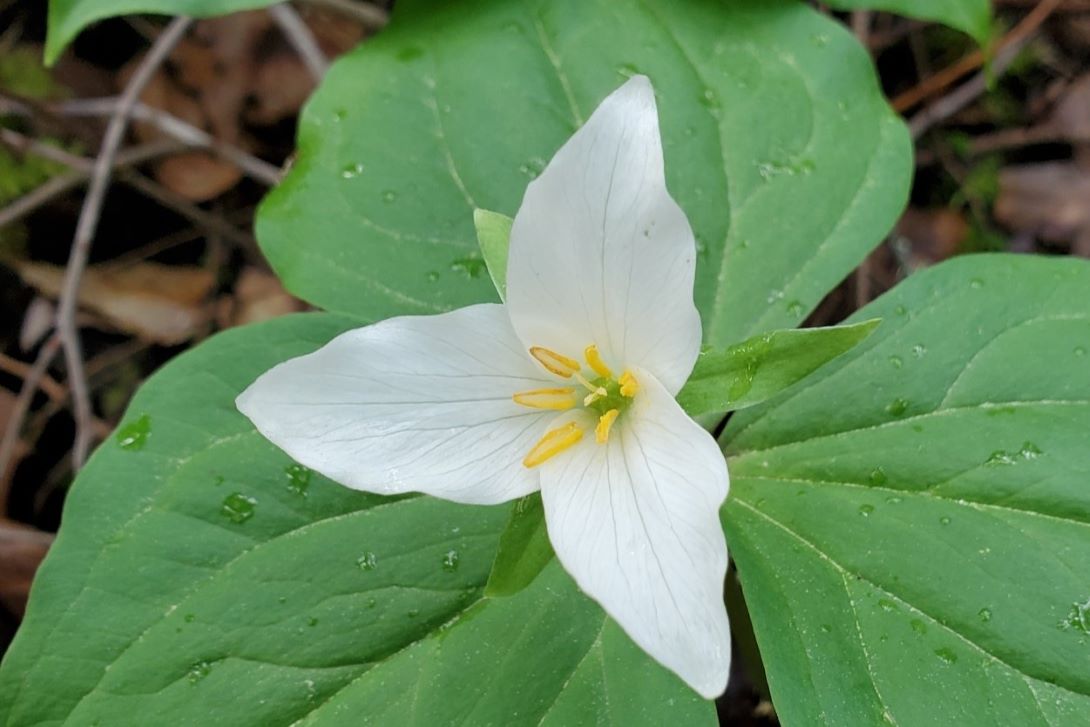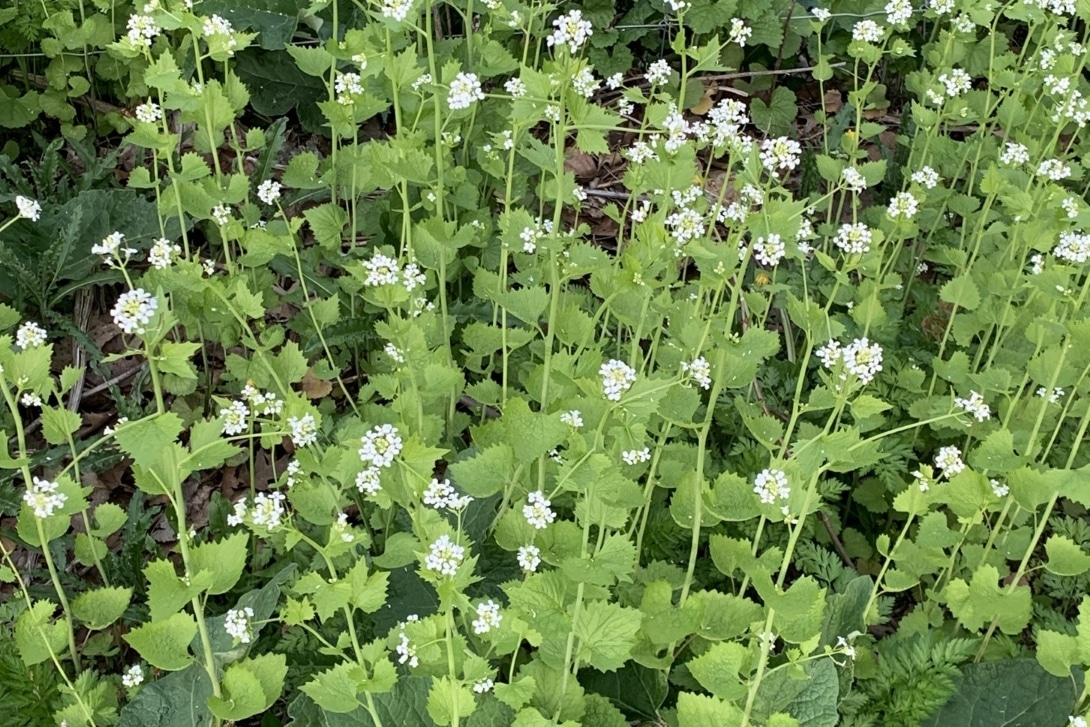Weeding through botanical terminology: What are native, invasive and ornamental plants?
By Ryan Godfrey, Aranya Iyer and Ellen Jakubowski
If you’ve spent any time exploring the world of plants, you’ve probably encountered terms like “native” and “invasive” species — and you’ve almost certainly referred to something as a “weed” at some point in your life.

While these terms are used often, the categories they describe are not always clearly defined. In fact, there are no universal or simple definitions for them, but knowing what these words tell us about plants’ relationships with their environment — including their relationship with us — is key to understanding them.
Here’s what WWF-Canada means when we use these plant terms. Oh, and keep in mind that these terms aren’t mutually exclusive — a single plant species can fit into several of these boxes.
| Plant Category | Description | Ecological, Evolutionary and Cultural Relationships | Species Examples |
| Native | A plant species that has been living in the local ecosystem for thousands of years and has developed many relationships with the other organisms living there. Native plants are well-adapted to local environmental conditions and patterns (e.g. soil, weather conditions and seasons) and are the foundation of healthy ecosystems. | Because these plants evolved alongside other species in the same ecosystem, they have deep relationships with those other living organisms and with the non-living environment. Together, native plants and the other organisms form an intricate ecological web that is resilient to stresses and adapts to changes over time. | Large white trillium (Trillium grandiflorum) in Ontario, Quebec and Nova Scotia; Pacific trillium (Trillium ovatum) in B.C. and Alberta |
| Near-native | A plant species that’s not (or has only recently been) present in the local ecosystem, but that is native to a nearby region. It is possible for these species to disperse into the local ecosystem without human intervention, via animals, wind or water. If people are involved in this dispersal, it’s called “assisted migration.” | Variable, but likely to be intermediate between the “native” and “introduced” categories. If these plants have close genetic relatives in the local ecosystem, or if they used to be present in the ecosystem before being absent for a time (e.g. a plant that was excluded by a glacier that later melted, allowing the plant to disperse back into the area), then they may integrate faster into the ecological web. | Striped maple (Acer pensylvanicum) in southern Ontario; Tolmie’s pussy ears (Calochortus tolmiei) in B.C. |
| Climate-adapted (subset of near-native) | Informed by climate changes we are already seeing as well as those projected to happen, ecosystem restoration practitioners are strategically planting near-native species that are well suited to a region’s future climatic conditions — these species are sometimes called “climate-adapted” plants. The species most likely to be chosen for this are long-lived, slow or short-distance dispersers with ranges typically south of where they are being moved to. | More mobile species are already on the move — birds, flying insects, plants with wind-dispersed seeds, etc. — and we call these species “climate migrants.” By helping climate-adapted plants move with them, we can preserve the deep co-evolutionary relationships these species have with one another. No matter which future climate scenario we find ourselves in, fostering more and deeper relationships among species will bolster ecosystem resilience. | Cucumber-tree (Magnolia acuminata) in southern Ontario; Ponderosa pine (Pinus ponderosa) in B.C. |
| Introduced | A species that is native to a region far from the local ecosystem and arrived relatively recently. These are most often accidentally or deliberately transported to the new location by people or, much less often, by other means such as being carried by “rafts” of floating wood/vegetation or transported by migrating animals. | Variable, but relationships with other species are often limited and weak. These species’ life cycles may be out of sync with the local seasonal changes and they may need extra care to survive, or they may spread aggressively in certain conditions. Introduced plants may become naturalized or invasive or neither, and it’s hard to predict which outcome will happen or when. | Norway maple (Acer platanoides) in B.C., Ontario, Quebec and the Maritimes |
| Naturalized | An introduced species that is in the process of integrating into the local ecosystem. These species survive on their own, reproducing without human assistance in certain habitat types within the ecosystem, but have only been present in the region for decades to centuries rather than millennia. These species are most often found in and around where people live, because people introduced them and/or because they thrive in areas disturbed by human activity. | These species may be common in certain conditions, but they don’t currently displace native species or disrupt ecosystem health or function. They are beginning to form deeper relationships with other species. | English plantain (Plantago lanceolata) in BC., Manitoba and eastern Canada |
| Cultural | Species that are used, grown and dispersed intentionally by people. These plants have uses beyond their aesthetic value (food, medicine, fiber, dye, building material, etc.) and are often represented in art and stories. Some are used locally in their native ranges, while others are dispersed through trade or human migration. | Beyond their value to people, these plants may or may not have relationships with other species; this depends on whether they have a long history in the area or were recently brought there by people and whether they have close genetic relatives that are native species. These species may require human care and cultivation in order to thrive. | Heirloom carrot (Daucus carota) across Canada |
| Ornamental | Species that are grown by people because of their desirable traits (e.g. the colour, texture or shape of their flowers, leaves or stems). Often, these are heavily inbred, marketed “strains” that rise and fall in popularity like other cultural fashion trends. | Their ability to perform their roles in the ecosystem and their level of genetic variation are often eroded or impaired through the selective breeding process, similar to purebred dogs. Still, some can escape cultivation, often reverting to their “wild” form within a few generations. From there, they may become naturalized or invasive or neither. | Common lilac (Syringa vulgaris) across southern Canada |
| Invasive | Introduced species that spread rapidly and cause harm. The harm may be ecological (displacing native species, using up resources, spreading disease), economic (contaminating crops, damaging buildings, clogging waterways, poisoning livestock) or physical (harmful thorns, caustic oils). Removing these species or stopping/slowing their spread is typically costly and labour intensive. | As they spread, they create large areas of monoculture (i.e. where they are the only species present), leaving little or no room for other species. In these spaces, invasive species often have no predators or parasites and provide little or no nutrition to local herbivores. Removing invasive plants may be a never-ending task, but sometimes the removed plants have practical uses, in which case the removal can also be a harvest. There is much debate about whether these species can ever become naturalized. | Garlic mustard (Alliaria petiolata) in B.C., Ontario, Quebec and Atlantic Canada |
| Ruderal | A plant species that grows in or along the edges of places where there is, or used to be, a lot of human activity. These strong dispersers are found almost everywhere on Earth and are highly tolerant of degraded soils and harsh environmental conditions. | From the human perspective, ruderals can be considered either parasitic (i.e. a harmful nuisance) or commensal (i.e. neither benefitting nor hurting people). They follow our migrations, spreading wherever people have a significant footprint. Their propagules (detachable structures like seeds or stems that allow a species to spread) often travel in soil or agricultural seed or on vehicles or footwear. | Common lamb’s-quarters (Chenopodium album) across Canada |
| Weed | A subjective and non-scientific term to describe any plant that is unwanted in a particular location. This may be due to the way they look or something that they do (usually spreading too much). Plants called “weeds,” which can include some native, naturalized, invasive and cultural plants, may also be considered that in one time and place but not in another. | Variable and context dependent. Other terms on this list do a better job of explaining a plant’s ecological role in a given place and how they relate to the other species in the area. When deciding whether to keep or remove plants, consider their ecological functions and relationships — a plant that others consider a weed may actually be something that you want to keep. | Common milkweed (Asclepias syriaca) from Saskatchewan east to Nova Scotia; salmonberry (Rubus spectabilis) in B.C. |



